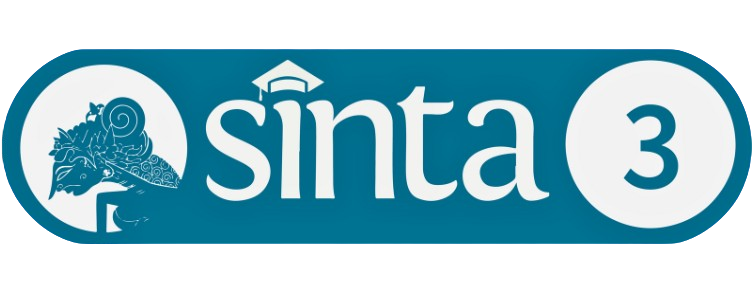Efek Moderasi Usia pada Hubungan antara Toleransi Ambiguitas dan Rasa Ingin Tahu Individu Dewasa
Unduhan
Toleransi ambiguitas dan usia diduga memiliki hubungan interaktif yang berpengaruh terhadap rasa ingin tahu individu. Penelitian sebelumnya menunjukkan bahwa usia berpengaruh secara negatif terhadap rasa ingin tahu individu, namun ada juga beberapa penelitian yang menunjukkan hasil yang tidak konsisten. Penelitian ini bertujuan untuk mengetahui (1) apakah ada hubungan antara toleransi ambiguitas dan rasa ingin tahu; dan (2) apakah usia berperan sebagai moderator pada hubungan antara toleransi ambiguitas dan rasa ingin tahu. Penelitian ini dilakukan dengan metode cross-sectional survei secara daring. Sebanyak 196 partisipan berusia diatas 18 tahun (M=29.4; SD=12.5) menjawab pertanyaan dari skala Curiosity and Exploration Inventory-II dan skala Multiple Stimulus Types Ambiguity Tolerance-II. Analisis data dilakukan menggunakan teknik moderated regression analysis dengan metode bootstrap. Hasil penelitian menunjukkan bahwa toleransi ambiguitas memiliki efek yang kuat dengan rasa ingin tahu secara signifikan. Sedangkan, hasil moderasi antara toleransi ambiguitas dan usia memiliki efek yang tidak signifikan.
Berg, C. A., & Sternberg, R. J. (1985). Response to Novelty: Continuity Versus Discontinuity in the Developmental Course of Intelligence. Dalam Advances in Child Development and Behavior (Vol. 19, hlm. 1–47). Elsevier. https://doi.org/10.1016/S0065-2407(08)60387-0
Berlyne, D. E. (1954). A THEORY OF HUMAN CURIOSITY. British Journal of Psychology. General Section, 45(3), 180–191. https://doi.org/10.1111/j.2044-8295.1954.tb01243.x
Berlyne, D. E. (1960). Conflict, arousal, and curiosity. McGraw-Hill Book Company. https://doi.org/10.1037/11164-000
Berlyne, D. E. (1978). Curiosity and learning. Motivation and Emotion, 2(2), 97–175. https://doi.org/10.1007/BF00993037
Bishop, S. R., Lau, M., Shapiro, S., Carlson, L., Anderson, N. D., Carmody, J., Segal, Z. V., Abbey, S., Speca, M., Velting, D., & Devins, G. (2004). Mindfulness: A proposed operational definition. Clinical Psychology: Science and Practice, 11(3), 230–241. https://doi.org/10.1093/clipsy.bph077
Budner, S. (1962). Intolerance of ambiguity as a personality variable. Journal of Personality, 30(1), 29–50. https://doi.org/10.1111/j.1467-6494.1962.tb02303.x
Camp, C. J., Dietrich, M. S., & Olson, K. R. (1985). CURIOSITY AND UNCERTAINTY IN YOUNG, MIDDLE AGED, AND OLDER ADULTS. Educational Gerontology, 11(6), 401–412. https://doi.org/10.1080/0380127850110606
Camp, C. J., Rodrigue, J. R., & Olson, K. R. (1984). CURIOSITY IN YOUNG, MIDDLE"AGED, AND OLDER ADULTS. Educational Gerontology, 10(5), 387–400. https://doi.org/10.1080/0380127840100504
Chu, L., & Fung, H. H. (2021). Age Differences in State Curiosity: Examining the Role of Personal Relevance. Gerontology, 1–9. https://doi.org/10.1159/000516296
Chu, L., Tsai, J. L., & Fung, H. H. (2021). Association between age and intellectual curiosity: The mediating roles of future time perspective and importance of curiosity. European Journal of Ageing, 18(1), 45–53. https://doi.org/10.1007/s10433-020-00567-6
Collins, R. P., Litman, J. A., & Spielberger, C. D. (2004). The measurement of perceptual curiosity. Personality and Individual Differences, 36(5), 1127–1141. https://doi.org/10.1016/S0191-8869(03)00205-8
Daffner, K. R., Scinto, L. F. M., Weintraub, S., Guinessey, J., & Mesulam, M.-M. (1994). The Impact of Aging on Curiosity as Measured by Exploratory Eye Movements. Archives of Neurology, 51(4), 368–376. https://doi.org/10.1001/archneur.1994.00540160062009
Faul, F., Erdfelder, E., Buchner, A., & Lang, A.-G. (2009). Statistical power analyses using G*Power 3.1: Tests for correlation and regression analyses. Behavior Research Methods, 41(4), 1149–1160. https://doi.org/10.3758/BRM.41.4.1149
Gould, R. L. (1972). The Phases of Adult Life: A Study in Developmental Psychology. American Journal of Psychiatry, 129(5), 521–531. https://doi.org/10.1176/ajp.129.5.521
Grossnickle, E. (2016). Disentangling Curiosity: Dimensionality, Definitions, and Distinctions from Interest in Educational Contexts. EDUCATIONAL PSYCHOLOGY REVIEW, 28(1), 23–60. https://doi.org/10.1007/s10648-014-9294-y
Haeger, H., Lambert, A. D., Kinzie, J., & Gieser, J. (2012). Using cognitive interviews to improve survey instruments. https://scholarworks.iu.edu/dspace/handle/2022/24334
Hardy, S. E., Concato, J., & Gill, T. M. (2002). Stressful life events among community-living older persons. Journal of General Internal Medicine, 17(11), 841–847. https://doi.org/10.1046/j.1525-1497.2002.20105.x
Hess, T. M., Queen, T. L., & Ennis, G. E. (2013). Age and Self-Relevance Effects on Information Search During Decision Making. The Journals of Gerontology Series B: Psychological Sciences and Social Sciences, 68(5), 703–711. https://doi.org/10.1093/geronb/gbs108
Jovanovic, V., & Brdaric, D. (2012). Did curiosity kill the cat? Evidence from subjective well-being in adolescents. PERSONALITY AND INDIVIDUAL DIFFERENCES, 52(3), 380–384. https://doi.org/10.1016/j.paid.2011.10.043
Kashdan, T. B., Gallagher, M. W., Silvia, P. J., Winterstein, B. P., Breen, W. E., Terhar, D., & Steger, M. F. (2009). The curiosity and exploration inventory-II: Development, factor structure, and psychometrics. Journal of Research in Personality, 43(6), 987–998. https://doi.org/10.1016/j.jrp.2009.04.011
Kashdan, T. B., & Silvia, P. J. (2009). Curiosity and Interest: The Benefits of Thriving on Novelty and Challenge. Dalam S. J. Lopez & C. R. Snyder (Ed.), The Oxford Handbook of Positive Psychology (hlm. 366–374). Oxford University Press. https://doi.org/10.1093/oxfordhb/9780195187243.013.0034
Litman, J. (2005). Curiosity and the pleasures of learning: Wanting and liking new information. Cognition & Emotion, 19(6), 793–814. https://doi.org/10.1080/02699930541000101
Litman, J. A. (2010). Relationships between measures of I- and D-type curiosity, ambiguity tolerance, and need for closure: An initial test of the wanting-liking model of information-seeking. Personality and Individual Differences, 48(4), 397–402. https://doi.org/10.1016/j.paid.2009.11.005
Litman, J. A., & Spielberger, C. D. (2003). Measuring Epistemic Curiosity and Its Diversive and Specific Components. Journal of Personality Assessment, 80(1), 75–86. https://doi.org/10.1207/S15327752JPA8001_16
Loewenstein, G. (1994). The psychology of curiosity: A review and reinterpretation. Psychological Bulletin, 116(1), 75–98. https://doi.org/10.1037/0033-2909.116.1.75
McLain, D. L. (2009). Evidence of the Properties of an Ambiguity Tolerance Measure: The Multiple Stimulus Types Ambiguity Tolerance Scale–II (MSTAT–II). Psychological Reports, 105(3), 975–988. https://doi.org/10.2466/PR0.105.3.975-988
Miljković, D., & JurÄec, L. (2016). Is curiosity good for students? The case of Faculty of Teacher Education and Faculty of Kinesiology/Je li dobro biti radoznao? SluÄaj studenata UÄiteljskog i KinezioloÅ¡kog fakulteta. Croatian Journal of Education - Hrvatski Äasopis za odgoj i obrazovanje, 18(0). https://doi.org/10.15516/cje.v18i0.2184
Navarro, D. J., & Foxcroft, D. R. (2018). Learning statistics with jamovi: A tutorial for psychology students and other beginners. Danielle J. Navarro and David R. Foxcroft. https://doi.org/10.24384/HGC3-7P15
Neuman, W. L. (2014). Social research methods: Qualitative and quantitative approaches. Pearson Education Limited.
Polit, D. F., & Beck, C. T. (2006). The content validity index: Are you sure you know what's being reported? critique and recommendations. Research in Nursing & Health, 29(5), 489–497. https://doi.org/10.1002/nur.20147
Priniski, S. J., Hecht, C. A., & Harackiewicz, J. M. (2018). Making Learning Personally Meaningful: A New Framework for Relevance Research. The Journal of Experimental Education, 86(1), 11–29. https://doi.org/10.1080/00220973.2017.1380589
Reio, T. G., & Sanders"Reio, J. (2020). Curiosity and well"being in emerging adulthood. New Horizons in Adult Education and Human Resource Development, 32(1), 17–27. https://doi.org/10.1002/nha3.20270
Robinson, O., Demetre, J., & Litman, J. (2017). Adult life stage and crisis as predictors of curiosity and authenticity: Testing inferences from Erikson's lifespan theory. INTERNATIONAL JOURNAL OF BEHAVIORAL DEVELOPMENT, 41(3), 426–431. https://doi.org/10.1177/0165025416645201
Sakaki, M., Yagi, A., & Murayama, K. (2018). Curiosity in old age: A possible key to achieving adaptive aging. Neuroscience & Biobehavioral Reviews, 88, 106–116. https://doi.org/10.1016/j.neubiorev.2018.03.007
Setyowati, A., Chung, M.-H., Yusuf, Ah., & Haksama, S. (2020). Psychometric of the Curiosity and Exploration Inventory-II in Indonesia. Journal of Public Health Research, 9(3). https://doi.org/10.4081/jphr.2020.1745
Silvia, P. J. (2006). Exploring the Psychology of Interest. Oxford University Press. https://doi.org/10.1093/acprof:oso/9780195158557.001.0001
Silvia, P. J. (2008). Interest”The Curious Emotion. Current Directions in Psychological Science, 17(1), 57–60. https://doi.org/10.1111/j.1467-8721.2008.00548.x
Singh, K., & Xie, M. (2008). Bootstrap: A Statistical Method. 14.
Vasileiou, D., Moraitou, D., Papaliagkas, V., Pezirkianidis, C., Stalikas, A., Papantoniou, G., & Sofologi, M. (2021). The Relationships between Character Strengths and Subjective Wellbeing: Evidence from Greece under Lockdown during COVID-19 Pandemic. International Journal of Environmental Research and Public Health, 18(20), 10868. https://doi.org/10.3390/ijerph182010868
Voss, H.-G., & Keller, H. (1983). Curiosity and Exploration. Elsevier. https://doi.org/10.1016/C2013-0-11659-5
Hak Cipta (c) 2022 Cristalia Nuur Annisa, Rahkman Ardi

Artikel ini berlisensiCreative Commons Attribution-ShareAlike 4.0 International License.
BRPKM adalah terbitan berkala dengan akses terbuka Creative Commons Attribution 4.0 International (CC-BY 4.0) sehingga hak cipta tetap berada di tangan penulis.
Dengan lisensi ini, siapapun berhak menggunakan informasi dan melakukan re-distribusi konten yang dimuat dalam jurnal ini untuk kepentingan apapun, termasuk kepentingan komersial. Hal tersebut dapat dilakukan selama memenuhi dua kondisi, yaitu; (1) anda harus memberikan atribusi dengan mengutip sumber tautan aslinya, dan menyatakan apabila ada perubahan yang dilakukan; dan (2) anda tidak dapat menggunakan ketentuan hukum atau sarana kontrol teknologi yang secara hukum dapat membatasi orang lain untuk melakukan hal-hal yang diizinkan oleh lisensi ini.
Redaksi jurnal tidak akan meminta penulis untuk melakukan persetujuan transfer hak cipta atas semua naskah yang diterbitkan.










